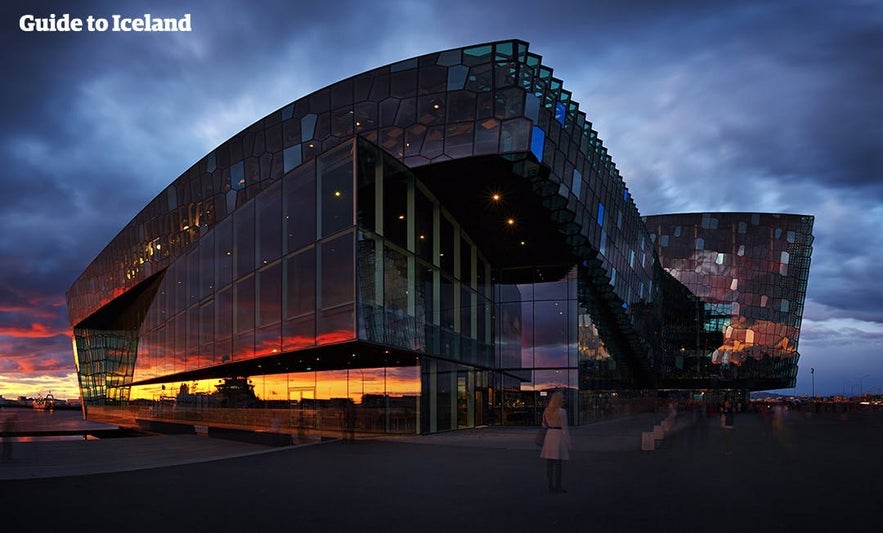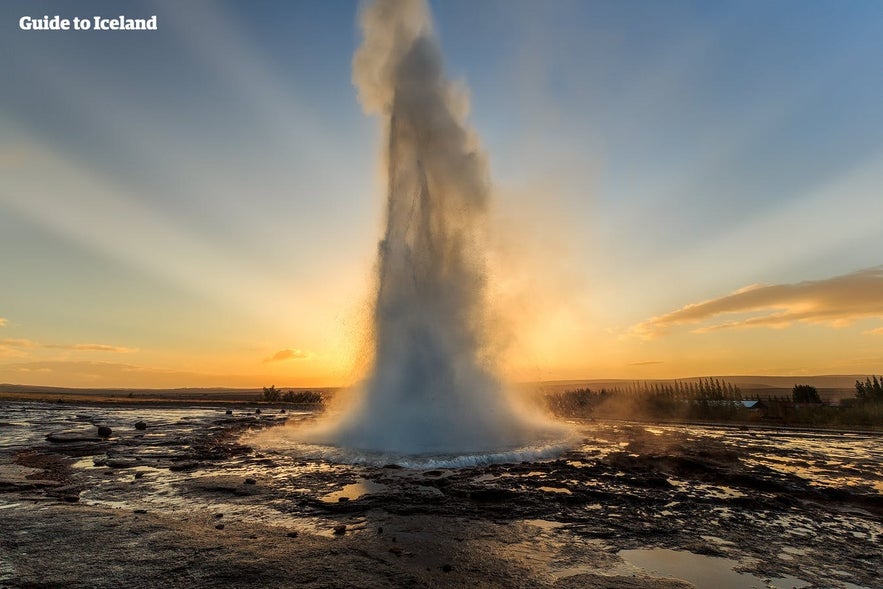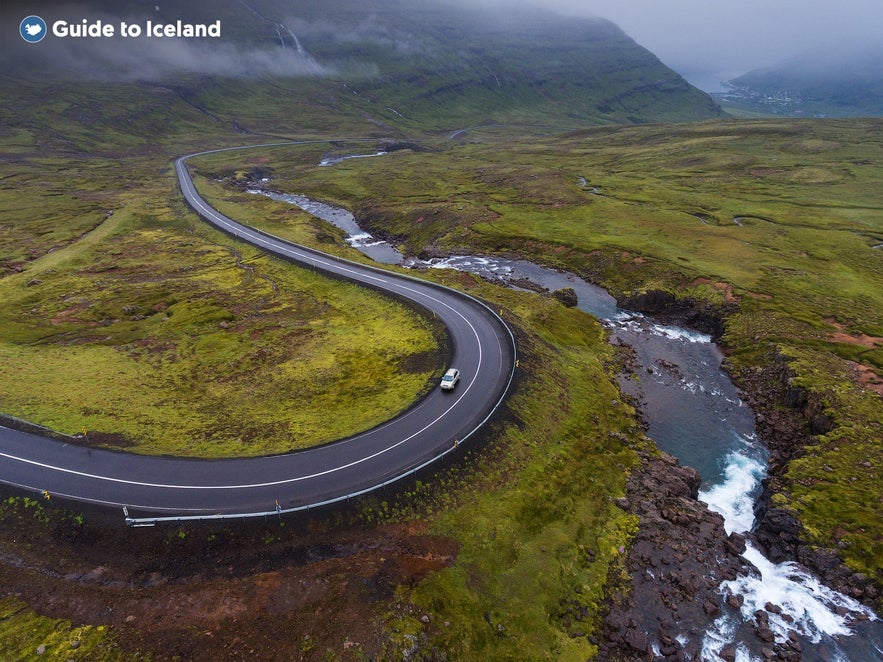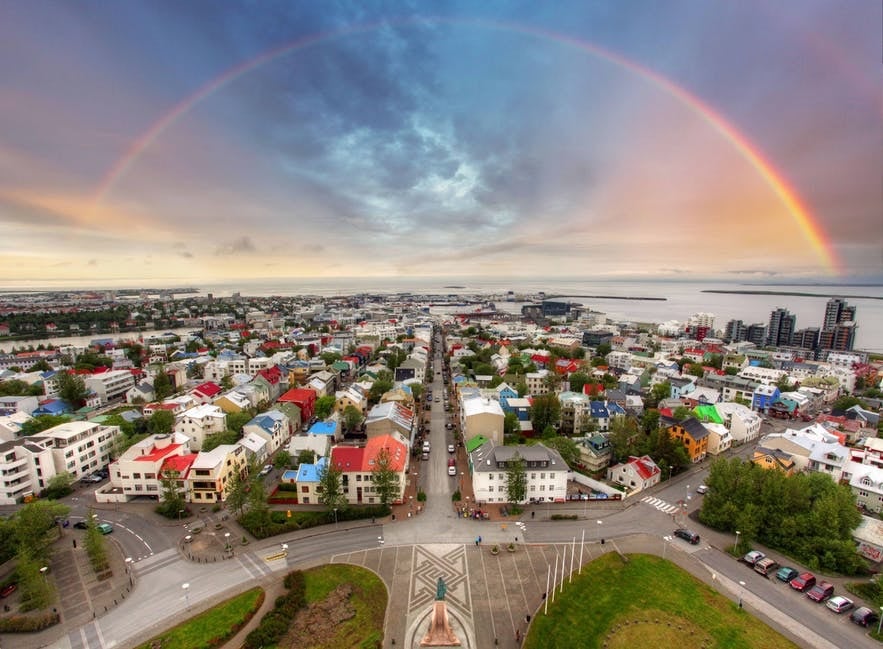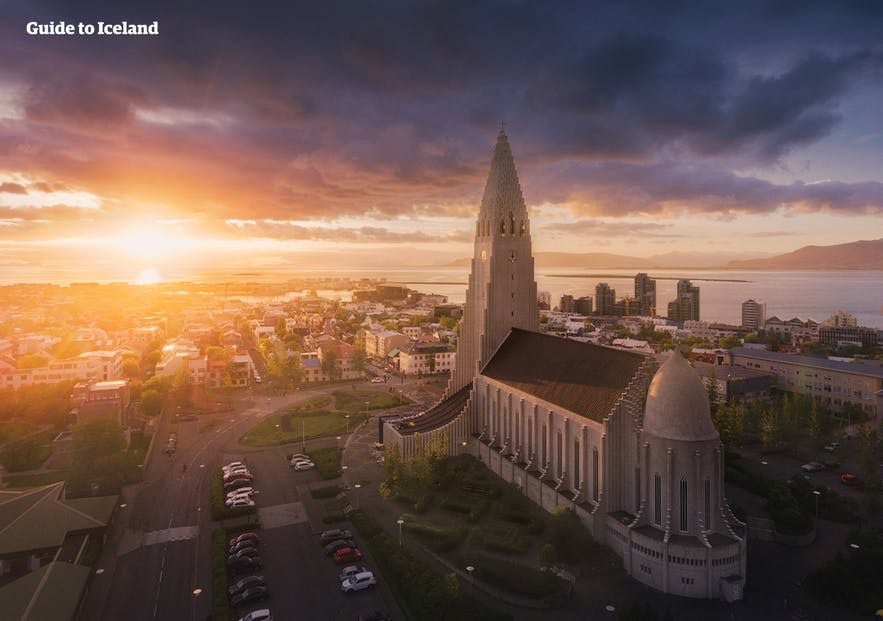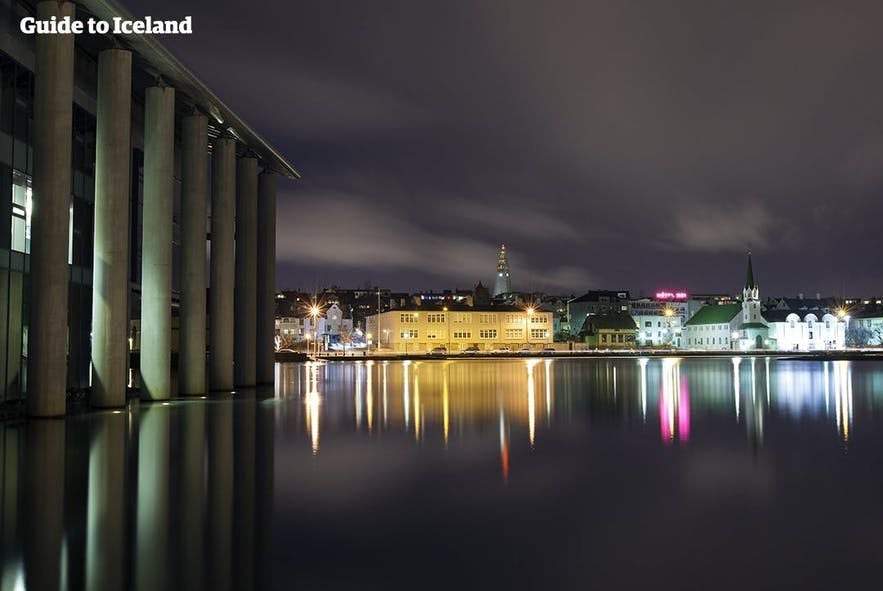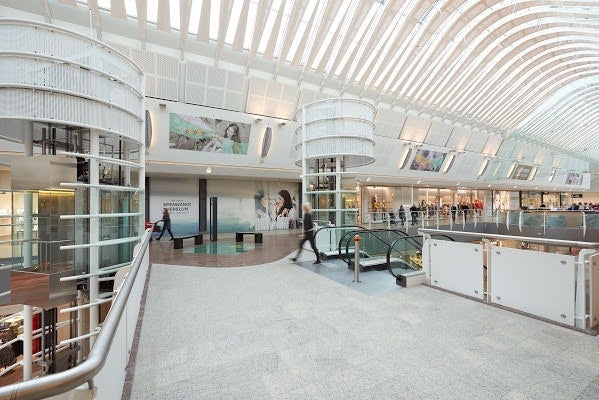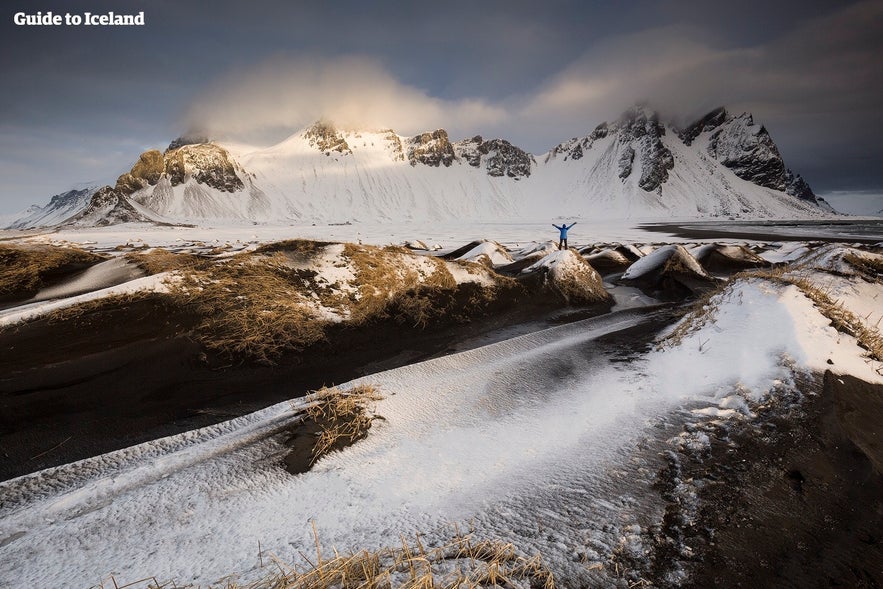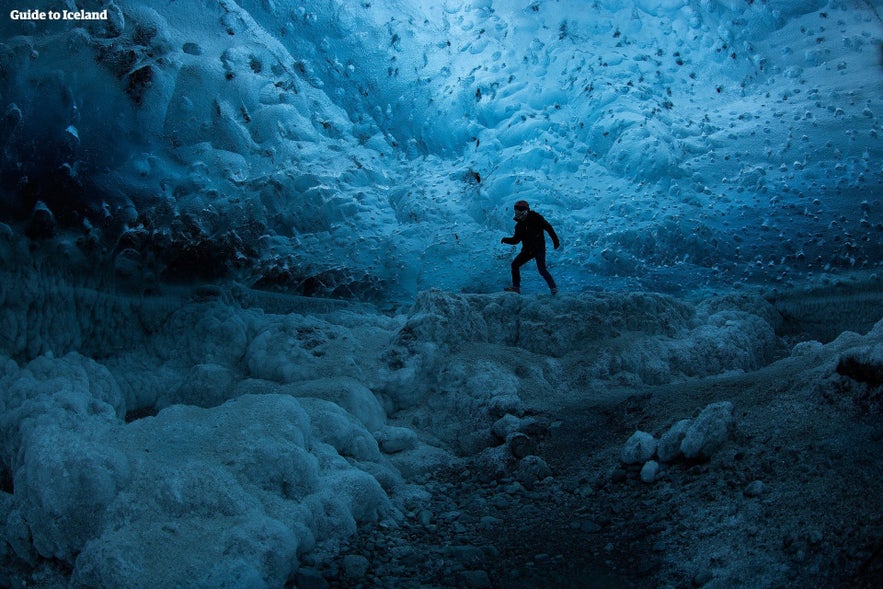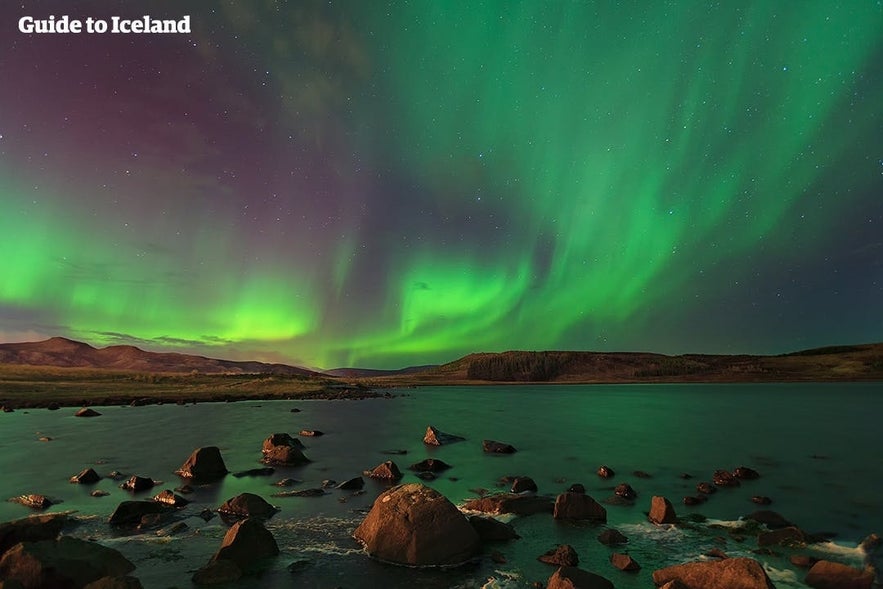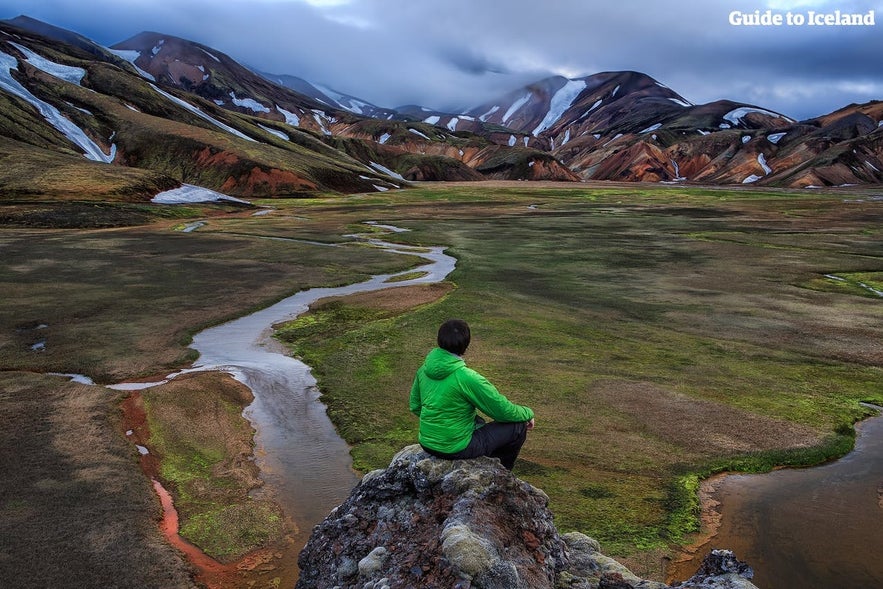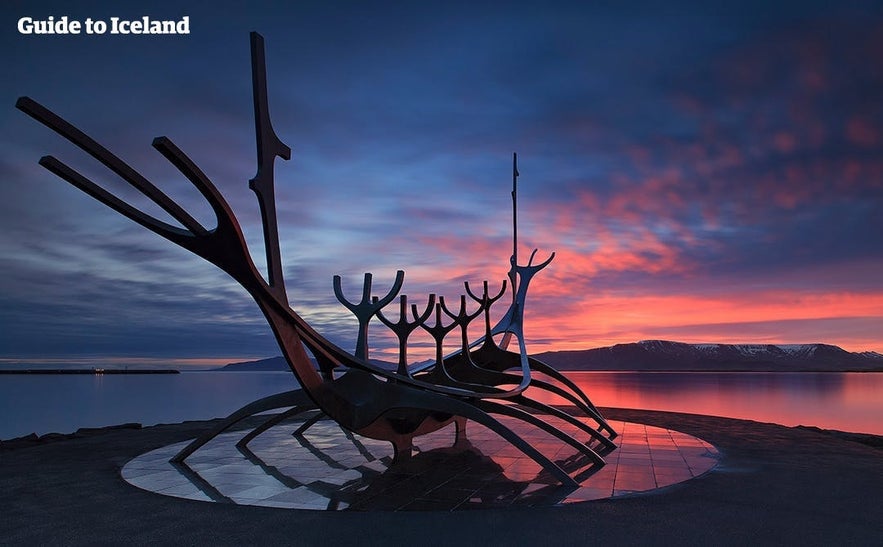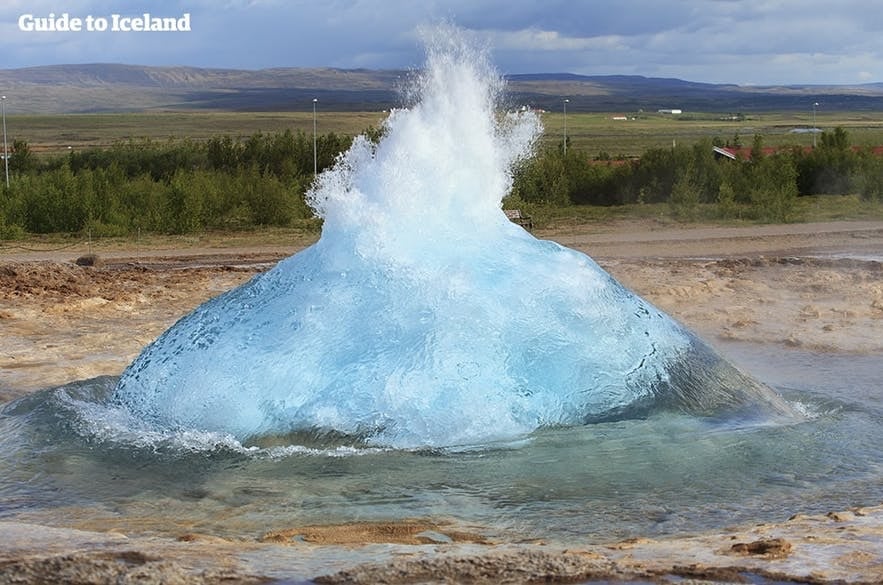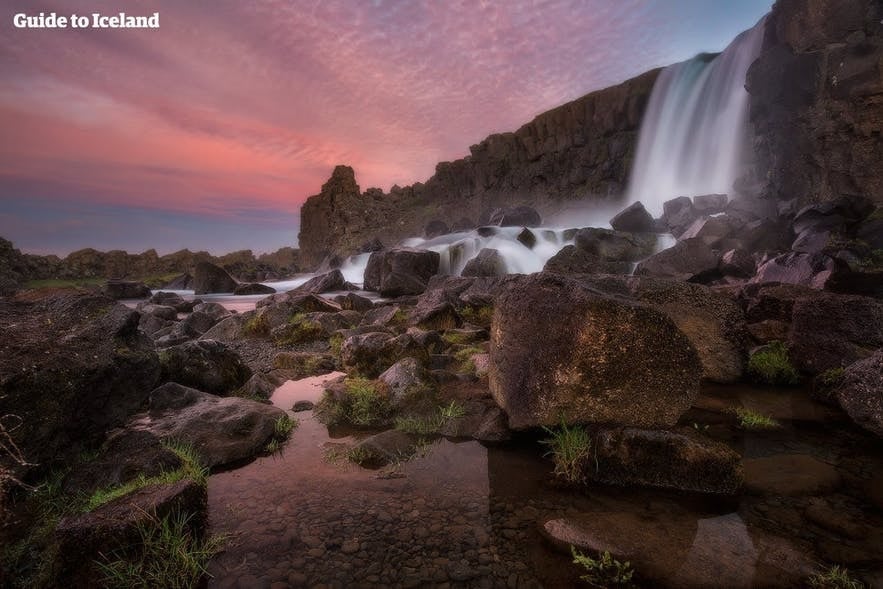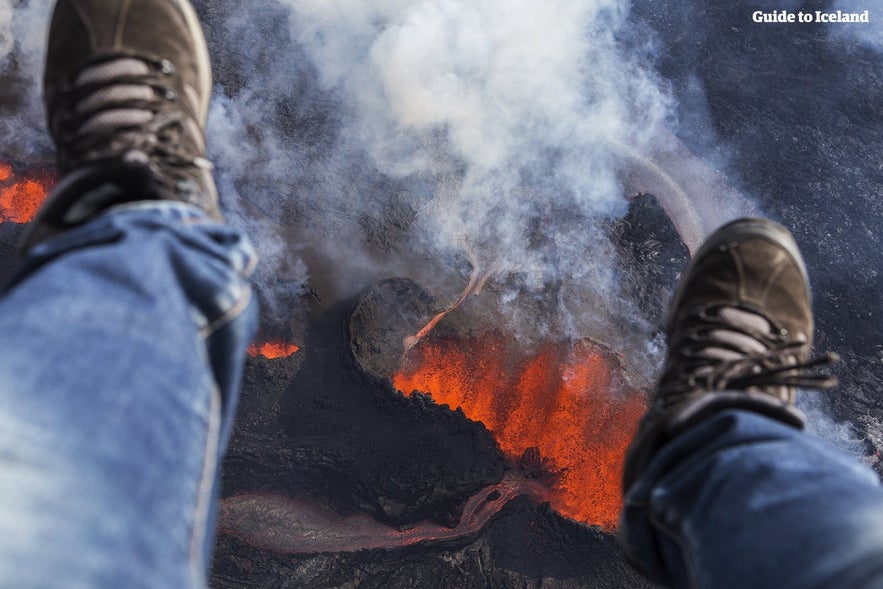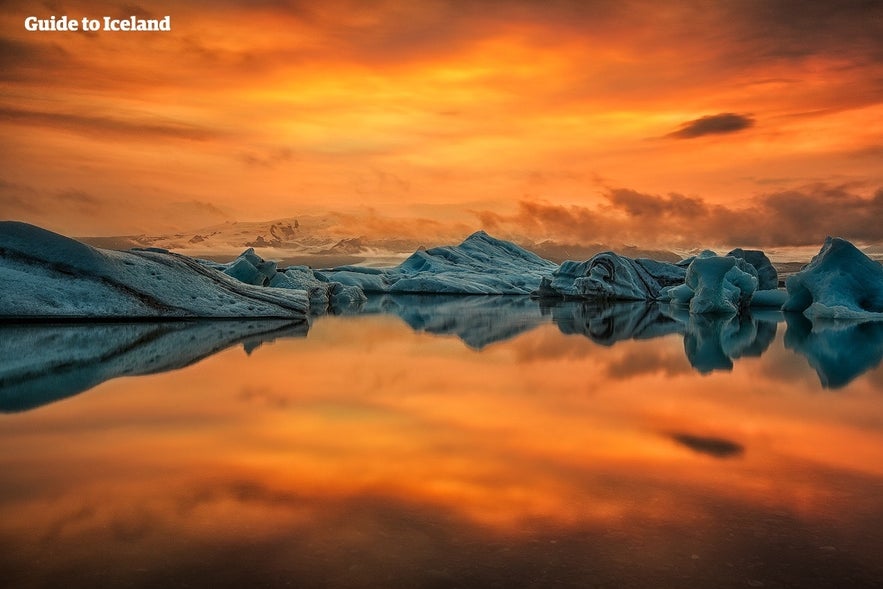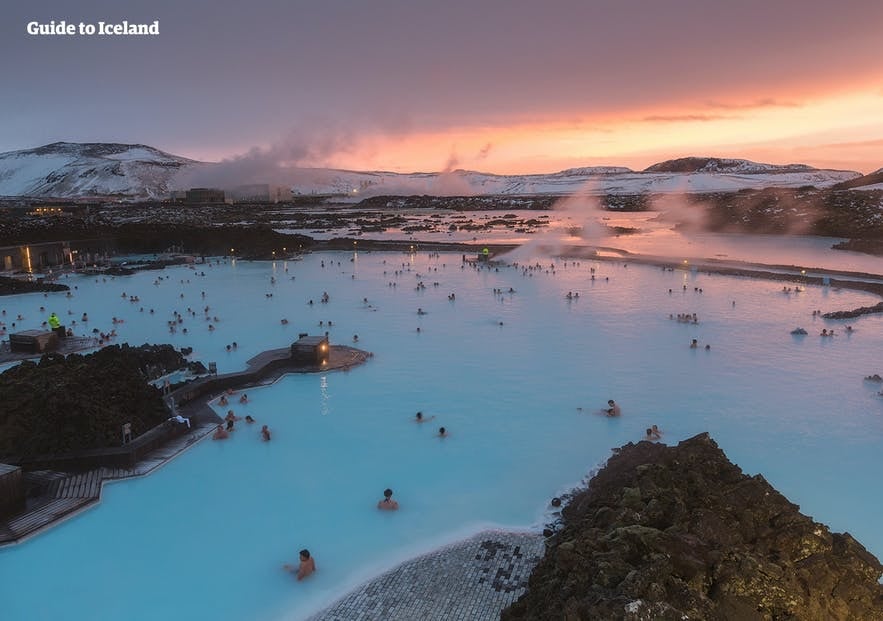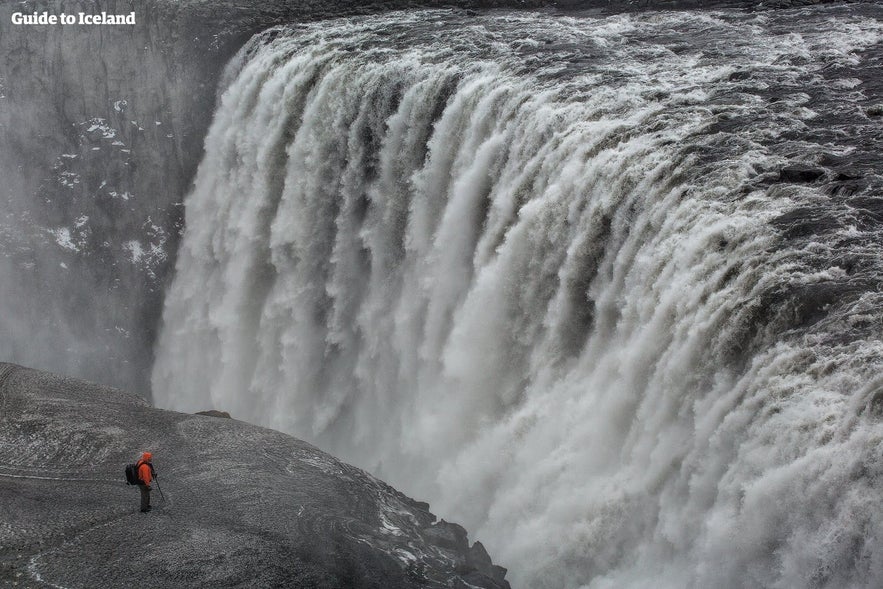How expensive is Iceland? What’s the condition of the Icelandic currency? Find out how much a trip to Iceland would cost to help you better budget for your trip. Read on to discover our guide on spending and saving money in Iceland.
While Iceland is known for its breathtaking landscapes and high travel costs, it is becoming increasingly affordable and now competes with other Northern European destinations.
Recent changes, such as a cooling in demand, improved infrastructure, and lower inflation, have made travel costs more competitive. Though Iceland’s cost of living remains about 15.8% higher than in the U.S., budget-conscious travelers can save money by planning wisely.
On average, a trip to Iceland costs around 100 USD to 200 USD per day, depending on spending habits and travel style. While expenses can add up quickly, there are plenty of ways to cut costs without sacrificing experience.
The simplest way to save money is by using Guide to Iceland’s VIP Club, which offers special discounts at restaurants, bars, and shops across the country. The VIP Club is available to all Guide to Iceland customers.
For self-drive tours, consider renting a budget car. You can also book a hotel from a wide selection of Iceland’s accommodations to help cut costs — especially if booked in advance. If you haven't booked your flight yet, find affordable flights to Reykjavik and make the most of the land of ice and fire!
Key Takeaways
-
Iceland can be expensive: Accommodation, food, and activities tend to be more costly than in many other countries, but you can manage your expenses with proper planning.
-
Visit during shoulder seasons: To save money, consider traveling in late spring or early fall when prices for flights and accommodations are lower and the weather is still favorable.
-
Explore budget-friendly dining options: Eating out can be pricey, but affordable options like enjoying Icelandic hot dogs and budget-friendly grocery stores help keep food costs in check.
-
Tours offer great value: Joining Iceland tours can be a cost-effective way to experience top attractions while saving on transportation and entry fees.
- Discover 19 Tips on How to Save Money in Iceland
- Learn how to steer away from the 9 Worst Tourist Traps in Iceland
When To Visit Iceland To Save Money
To save money, the best time to visit Iceland is during the shoulder seasons. Flights and accommodations are more affordable compared to the summer peak. Consider traveling to Iceland in spring (May to June) or visiting Iceland in fall (September to October) for better pricing.
The weather is still pleasant, and you’ll encounter fewer tourists, making it easier to explore popular sites without the crowds and high prices. While Iceland has long been regarded as an expensive destination, recent trends show that costs are becoming more competitive.
"We’re seeing a shift in Iceland’s tourism landscape, with costs becoming more competitive than in recent years," says Oddný Arnardóttir, who heads North America tourism at Islandsstofa, the Icelandic Trade and Investment Promotion Agency.
"A slight cooling in demand, combined with increased infrastructure, greater availability, and lower inflation rates, has helped bring prices down.
Many travel services in Iceland are now on par with or even more affordable than those in other Northern European destinations, making it a fantastic time to visit."
Iceland in winter (November to March) can also offer significant savings, particularly on flights and hotel rates. While some attractions may be harder to reach due to the weather, the trade-off is cheaper travel costs.
Plus, winter offers a unique opportunity to see the northern lights and enjoy Iceland’s landscapes in a more tranquil, budget-friendly setting. With careful planning, winter can be a rewarding and cost-effective time to visit.
Accommodation and Transport Costs in Iceland
What you’ll end up paying for accommodation in Iceland largely depends on the type of lodging you select. To make it easier to understand how much you’ll spend in Iceland, we’ve converted all prices from ISK to USD.
However, remember that exchange rates do fluctuate constantly. So, the prices here will vary slightly, and you’ll always pay the actual ISK amount.
From Icelandic cottages for rent and affordable hostels to guesthouses with a local flavor, the variety at hand has a vast price range, and there are indeed options that will suit your particular needs.
While Iceland's hotel selection may be pricey, true luxury accommodations are rare, with most options being three-star hotels. However, you might still pay rates comparable to those in New York or London.
For three- or four-star hotels, the prices range from an affordable 50 USD to 850 USD per night, with most establishments offering free Wi-Fi. Breakfast is generally available, but not always included.
- Find out Where to Stay in Iceland
- See also: Top 10 Best Hotels in Reykjavik
Reykjavik is facing a growing housing crisis, with the top percentage of the community controlling the rental market, leaving many unable to buy homes or find rental apartments at all.
A major contributor to this problem is the high number of apartments leased through Airbnb. If you're considering this option, be mindful of the local impact and try not to add to the problem.
Consider booking official accommodations, and remember that renting apartments in Iceland is also available.
You can also stay in cozy summer cottages in the countryside, which offer closeness to nature, tranquillity, and exclusivity. They often come with a private hot tub while still being very affordable.
Nobody wants to stay cooped up in a hotel for their entire trip, so it's important to plan for activities and exploration. Even if you book the cheapest accommodation, the costs of tours, transportation, and food can still add up.
However, you can save on total costs by booking vacation packages in Iceland or budget self-drive tours that combine exciting experiences, accommodation, and transportation. It will be cheaper than booking all aspects of each package independently.
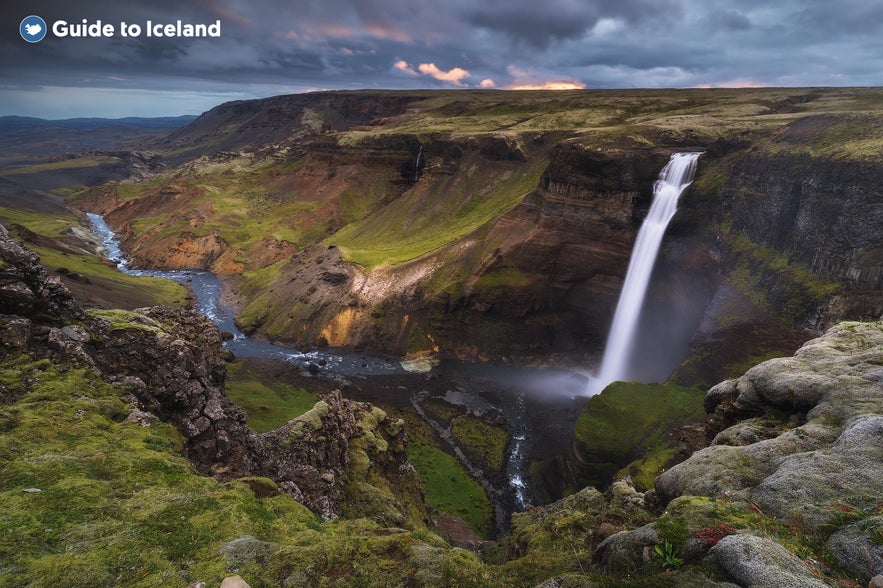 When camping in Iceland, you still need the means to travel to your selected locations. That is where renting a car in Iceland or booking a self-drive tour comes in handy.
When camping in Iceland, you still need the means to travel to your selected locations. That is where renting a car in Iceland or booking a self-drive tour comes in handy.
You’ll receive a vehicle with a rooftop tent or a campervan rental and a detailed itinerary that makes you the guide, enabling you to move around the island and visit sights on your own.
Remember that Iceland is situated on the edge of the Arctic Circle, so camping is an infinitely easier option during the summer months.
Camping in the Icelandic winter is reserved for only the most avid trekkers. Be sure to check the Icelandic Meteorological Office website to keep tabs on the weather forecast and pack the proper equipment.
- See info on What To Pack for Iceland for All Seasons
- See also: Iceland's Weather, Climate, and Temperature Year-Round
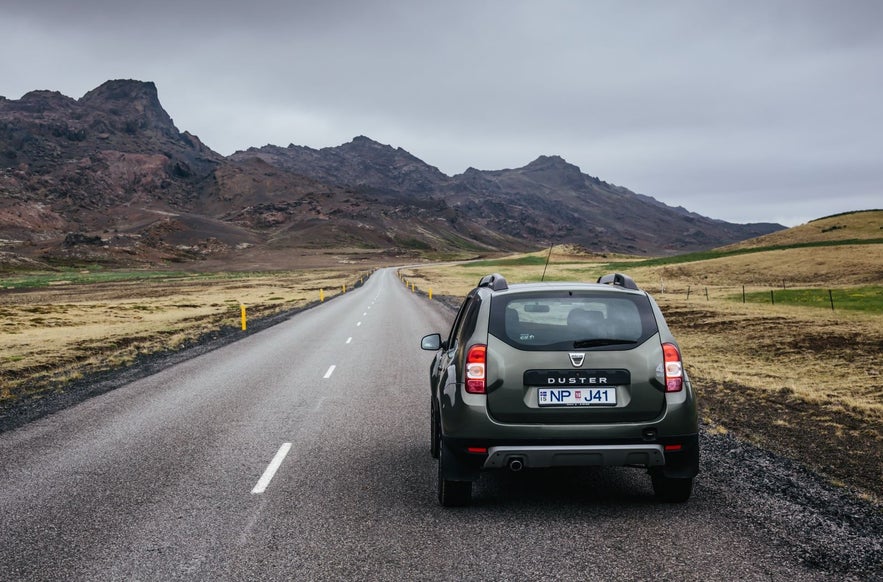 If you're feeling adventurous, there’s also the option of hitchhiking in Iceland, which is very safe. If you're driving a rental, picking up hitchhikers and suggesting that they pitch in for petrol is an excellent way of saving gas money.
If you're feeling adventurous, there’s also the option of hitchhiking in Iceland, which is very safe. If you're driving a rental, picking up hitchhikers and suggesting that they pitch in for petrol is an excellent way of saving gas money.
As for inner-city transportation in Iceland, only take a taxi if necessary and if you're traveling short distances within the city. It's incredibly expensive. The downtown area of Reykjavik is, in fact, very pedestrian-friendly.
It also boasts the public bus service Straeto, where the regular fare is around 4.95 USD and limitless within the hour. Day and month passes are also available for a better price, depending on how much you plan to use Reykjavik city buses.
Public transportation in Iceland outside the capital is not as good, though. If you’re traveling anywhere outside the city, you should know that renting a small car in Iceland is always a lot less expensive than taking a public bus.
Some newcomers make a big mistake by taking a taxi from Keflavik Airport to the city, which can be incredibly expensive. Instead, rent a car or book the Flybus transfer to Reykjavik, which will save tenfold.
How Much Do Food and Drinks Cost in Iceland?
In the last few years, Iceland has witnessed a surge in its local food scene, with numerous world-class restaurants sprouting all over the capital, some of which have Michelin stars and mentions!
The possibilities for dining are endless. Traditional Icelandic food is fused with other cuisines or spiced up with exotic ingredients to create venues for fine dining that stand tall among the competition.
But how expensive is food in Iceland? Eating out is relatively expensive (the average plate will cost between 15 USD and 40 USD), so the locals consider restaurant dining a treat instead of a regular occurrence.
If you'll be eating out in Iceland every night of your stay, expect your expenses to soar.
However, there are some affordable restaurants in Reykjavik worth checking out. Exploring food halls, the best bakeries, or grabbing a famous Icelandic hot dog can also help you save money while enjoying local flavors.
- See a selection of the Best Restaurants in Reykjavik
- Read our Vegan and Vegetarian Guide to Reykjavik
Save With Affordable Groceries

Be careful when you buy fast food like pizza, burgers, or sandwiches. While you might think it's more cost-effective, Reykjavik's casual dining is in the same price range as the more refined dining.
A pizza usually costs around 15-35 USD — virtually the same as a meal at a nice restaurant.
Eating out in Reykjavik is expensive. The best way to save a buck is to take advantage of lunch hours when numerous inner-city restaurants offer reduced prices or two-for-one deals on selected dishes.
The most economical way of eating food in Iceland is to cook it yourself. When shopping for groceries in Iceland, avoid the supermarket chains 10-11 or Krambudin, the most expensive grocery stores in Iceland.
Shopping there might go as far as doubling your grocery bill! Instead, head straight for the budget supermarkets in Iceland, where locals get groceries.
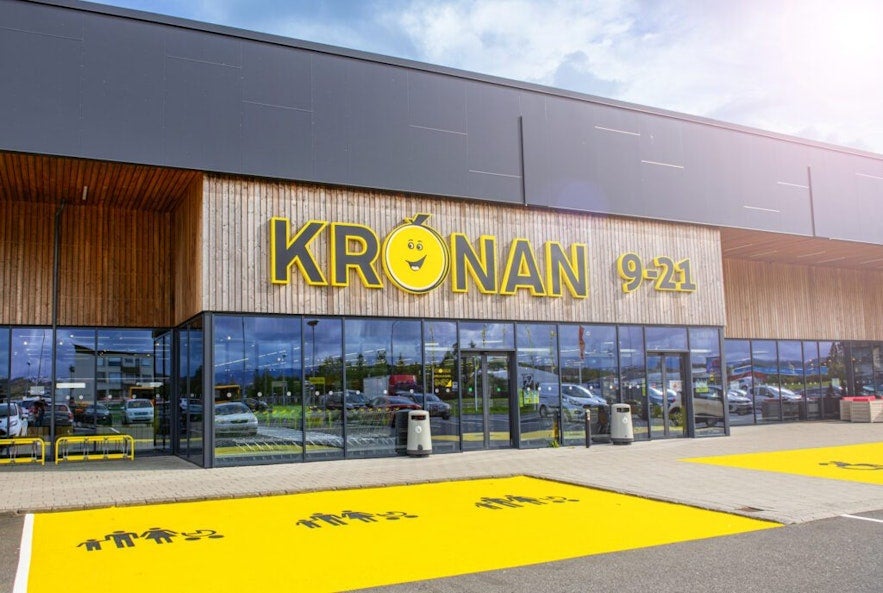 Go for low-price stores like Kronan, which has numerous locations in and outside the capital, offering some of Iceland's lowest grocery store prices.
Go for low-price stores like Kronan, which has numerous locations in and outside the capital, offering some of Iceland's lowest grocery store prices.
You'll find a great range of high-quality and environmentally friendly products for a low price, so this is the best way to make your Iceland trip more affordable.
Kronan stores are ideal for lunch-pack shopping before you leave town and embark on your adventures – especially if you need a simple ready-to-go sandwich, pastry, or another easy lunch option.
This way, you can skip the roadside kiosks that tend to offer things like burgers and hot dogs but for sky-high city restaurant prices!
Get Alcohol in the Right Places
celand’s relationship with alcohol is rather complicated. Beer prohibition was lifted as recently as 1989, but it’s still somewhat less accessible than in most other countries.
Alcohol is only sold in the state-run liquor store known as Vinbudin (Icelanders call it "Rikid," which simply means "The State"). It has limited opening hours and is always closed on Sundays and public holidays.
Therefore, you’ll want to stock up beforehand if you plan to go out or even stay in. However, in these state-run stores, taxes are very high, so the very best bet is to shop duty-free at the airport on arrival!
You should also watch out for what appears to be beer on the shelves of local supermarkets — it's not. Supermarkets are only allowed to sell beverages with a maximum alcohol content of 2.25%.
Despite all this, you can’t avoid hitting the streets at some point since Reykjavik boasts fantastic, high-quality bars and pubs that are a joy to visit.
Although the prices are high (roughly 8-10 USD for a pint), Reykjavik bars offer happy hours, so if you time your visit correctly, you can get good prices.
Now that you know how expensive Iceland is, don’t expect to save money on shots, mixers, or cocktails since those rarely fall under the happy hour menus. Most happy hours include the house’s red and white wines and sometimes a sugary cider if beer is not your preferred drink.
So What About Coffee Prices in Iceland?
How much is a cup of coffee in Iceland? A cup of latte or cappuccino costs around 5 USD, tea about 3 USD (usually with free hot water refills), and a regular black coffee costs anywhere from 2.50 USD to 4 USD. As in most places, going for regular filter coffee is usually the most affordable, especially as it usually includes refills.
Another money-saving tip is to avoid buying bottled water. Water from the faucet in Iceland is among the cleanest and purest in the world, full of healthy minerals, and is safe to drink. Just bring a water bottle with you, and rest assured that every establishment will happily refill it.
Shopping in Iceland
Photo courtesy of Smaralind mall
When shopping in Iceland, the cost ultimately depends on what you're here for and what you're willing to spend. Although enjoying Iceland is not solely reserved for the wealthy, shopping here might very well be.
Fashion wear in Iceland is taxed through the roof. For instance, a pair of Levi's jeans sells for roughly a 40 percent markup compared to Scandinavia, the UK, and the U.S.
Most locals prefer to do their most extensive shopping online or abroad, heading to discount stores in Copenhagen or Berlin in unison with their travel plans.
Icelanders also love to hunt for discounts and sales, so the two Reykjavik shopping malls, Kringlan and Smaralind, are the prime destinations.
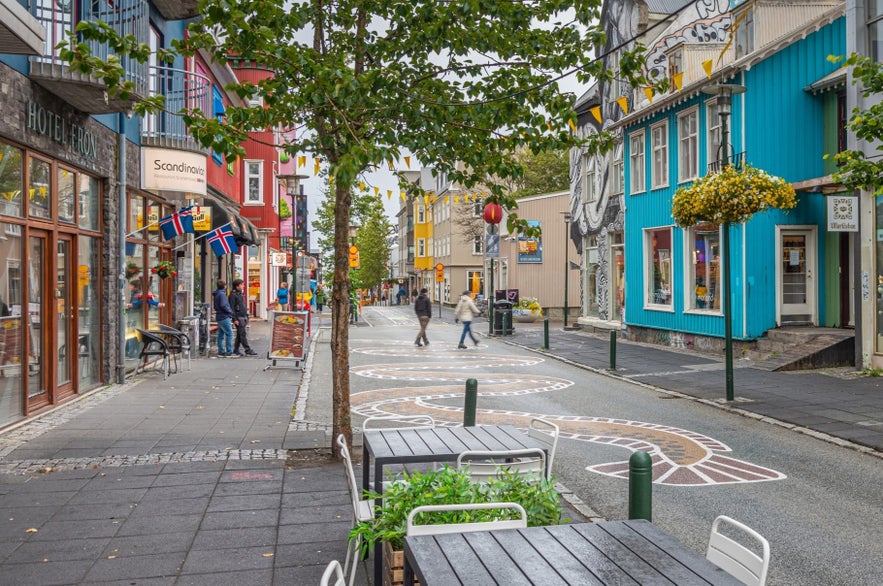
The city offers a wealth of local design stores, each holding unique and handmade garments for an attractive price. Shopping vintage is another option. There are a lot of great secondhand stores on Laugavegur Street, where you could even score your very own authentic lopapeysa for cheaper prices.
You can also head to Kolaportid Flea Market - the only place in Reykjavik where you can practice the art of haggling. The market is only open during the weekend, and you can find deals on Icelandic wool products, stamps, postcards, and vintage wear.
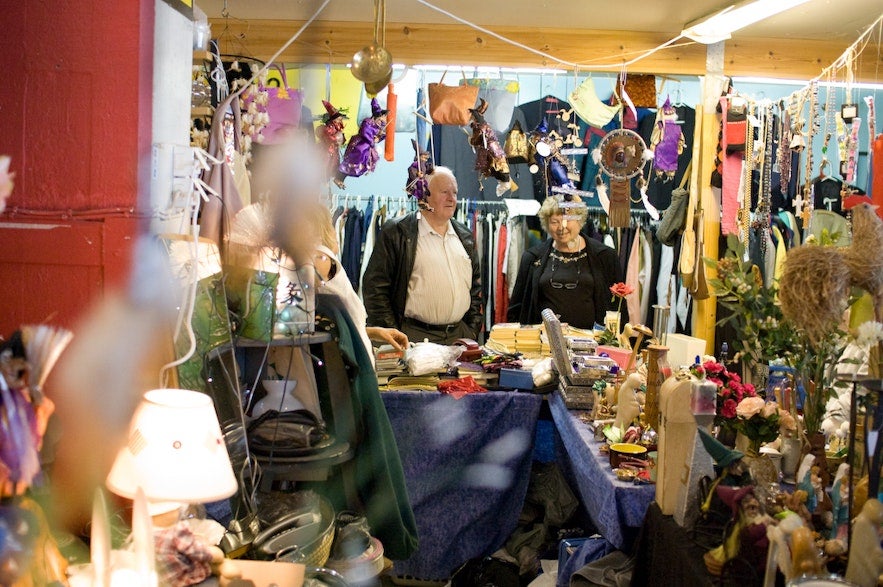
Photo from Wikimedia, Creative Commons, by Karl Gunnarsson. No edits made.
The so-called "puffin shops" that litter the local streets might promise a bargain on authentic memorabilia if you're looking for Icelandic souvenirs. But they’re specially tailored tourist traps selling only mass-produced plastic ornaments from faraway lands.
These shops also drive out local businesses, so you should hunt for the more authentic souvenirs at the National Museum of Iceland gift shop, the Handknitting Association of Iceland, or the aforementioned Kolaportid Flea Market.
The best memories you can buy are the numerous adventures you’ll embark on and all the stunning natural sights you’ll behold. Just remember to pack a camera, and you can bring back all those memories.
Sightseeing Costs in Iceland
They say that the best things in life are free. Icelandic nature boasts wonders unparalleled anywhere else in the world. It’s a place where the geothermally active terrain of the best hot springs and geysers meets with rural coastal villages, in contrast with the wild and uninhabited Highlands.
Although feasting your eyes on these marvels comes at no cost, you still need the means to get there, a place to stay, and the proper gear and guidance. Nature isn't only there to be looked at; you can and should participate in activities offered to experience it fully.
So when you head to, for example, Thingvellir National Park, the meeting point of two tectonic plates, you can add significantly to that experience with snorkeling tours in the amazing Silfra Fissure.
If you visit Skaftafell National Park, where you can see the largest ice cap in Europe, you can embark on glacier hiking tours. Heading further Southeast to the Jokulsarlon Glacier Lagoon, you can explore the Crystal Blue Ice Cave.
Luckily, Iceland offers various guided services to make these activities available to visitors. This is the case even with a celestial phenomenon like the northern lights in Iceland.
Though they appear in the winter sky of their own accord, some people work around the clock to calculate their arrival by using solar wind readings and weather forecasts. If that fails, most companies offer you compensation for your tour.
That compensation usually allows you to embark on the same tour on a different night to try your luck again — just make sure to check with your chosen tour provider. So, the most convenient way to see the auroras is to book northern lights tours for the beginning of your stay.
Tours differ significantly in expenses, but we advise you to book packages, as one adventure will undoubtedly leave you thirsty for more. If you purchase your tours one at a time, the costs will add up much faster than if you allow the experts to join a few together.
Iceland also offers endless possibilities for hiking and trekking. You can explore the vastness of the Highlands over a few days while staying in cabins in between.
Hiking in Iceland is a summer activity, but you still need warm clothes, good hiking boots, and food since there are no shops around.
For longer trips, remember always to submit a travel plan on the SafeTravel website so you can be located and rescued if you get into trouble. The nature of Iceland should not be underestimated, but if you follow the proper guidelines, you should be fine.
Apart from embarking on a wild adventure, there are also plentiful opportunities to go sightseeing within municipal limits. Reykjavik, the capital, boasts numerous museums and attractions, some of which are free to visit, while others offer savings through pass purchases.
For exploring Iceland's capital, the Reykjavik City Card is an economical and excellent way to get the most out of your stay in the capital. It provides access to a great selection of galleries and museums, all swimming pools in Reykjavik, and public transport.
The pass also gives you a discount on multiple tours and services when you want to leave town, meaning you won't only save money if you stay in the city. You can purchase a 24, 48, or 72-hour Reykjavik Card to meet your needs.
- See also: Top 15 Things to do in Reykjavik
- See also: Secret Spots & Hidden Gems in Reykjavik
Weekly and Daily Budgets: How Much You’ll Spend in Iceland
We hope this article has given you an idea of the different expenses and possibilities when traveling in Iceland. There's nothing left now except to present you with estimated budgets to better your abilities to plan the journey of your dreams.
The Backpacker
The Backpacker's approach to traveling in Iceland includes no transport except booking the affordable airport shuttle to Reykjavik. Otherwise, they can hitchhike.
They would camp in the city, where the cheapest option goes for around 23 USD per person. There are also a couple of additional costs, such as electricity rent or using a washing machine.
This person would cook their meals, and roughly 70 USD should buy them groceries for the week. When we throw in two 72-hour Reykjavik City Cards, showers are covered with daily trips to one of Reykjavik's geothermal swimming pools.
The Backpacker can sightsee the city, hike up Mount Esja, and hitchhike to nearby municipalities such as the Reykjadalur Hot Spring Valley in the town of Hveragerdi or the Reynisfjara Black Sand Beach near the village of Vik.
One week's expenses for this approach come to around 300 USD or 42 USD daily for one person.
Extra: Backpacker's Splurge
With one night out, one night eating out, and one budget tour, such as a Golden Circle minibus tour for one person, the estimation rises to about 435 USD for the week or around 62 USD per day.
The Minimalist
The Minimalist's approach includes hostel accommodation at about 55 USD per night, where cooking facilities enable them to buy groceries for the week for around 70 USD. Let's throw in a case of Icelandic beer for roughly 16 USD to keep the fridge stocked!
This individual would go to a cafe a couple of times and eat out once and allow themselves to purchase one combo tour, such as the whale-watching and the Golden Circle combo tour, for approximately 202 USD.
They would book an affordable airport transfer from Keflavik Airport for around 37 USD, but otherwise, use the public transport system or rent a small car for one day for around 46 USD.
The Minimalist could spend a day driving along the South Coast or visiting the Snaefellsnes Peninsula. A small rental car will suffice on the roads throughout the summer.
One week's expenses for this route come to about 570 USD or 81 USD daily.
Extra: Minimalist's Splurge
Booking admission to the luxurious Sky Lagoon and one good night out in Reykjavik would raise the estimation to around 675 USD for the week or 96 USD per day.
The Traveler
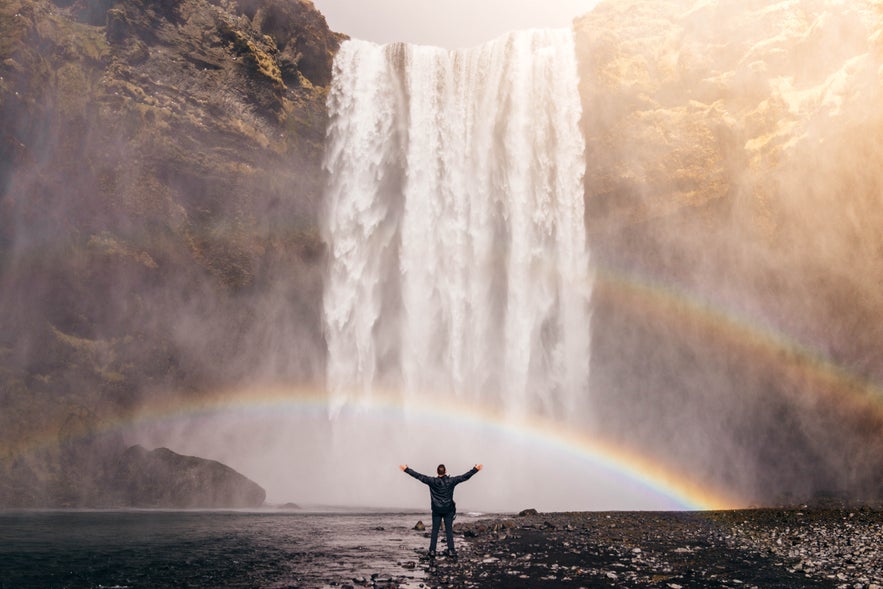
The Traveler would book hotels or a guesthouse for around 85 USD per night and rent a four-wheel drive car in Iceland for the whole week, with gas prices at roughly 2.30 USD per liter.
They would hit a cafe three times, eat out maybe four times, and buy additional groceries for 62 USD. They might purchase a couple of meet-on-location tours, such as this horse riding tour in beautiful scenery near Hveragerdi for around 93 USD and the Silfra snorkeling adventure at Thingvellir for 182 USD.
The Traveler uses their four-wheel drive car to explore the Highland roads, sightsee the wild nature of Iceland, and stay outside Reykjavik for several nights.
A week like that would come to about 1,380 USD or 197 USD daily.
Extra: Traveler's Splurge
With one all-included beer and schnapps walking tour in Reykjavik for 119 USD and admission to the world-renowned Blue Lagoon, the week goes up to around 1,594 USD, meaning around 227 USD per day.
The Big Spender
The Big Spender might book a nice hotel for 235 USD per night and a cottage in the countryside for 118 USD per night. That way, they could enjoy the full extent of gorgeous rural landscapes and the capital city.
They would rent a luxury car for seven days at 95 USD per day and go on three combo tours for 490 USD.
They might hit a cafe five times during the week and eat out every night. They wouldn't hesitate to match their meals with wine and craft beer, doubling restaurant expenses.
The Big Spender could spend a lot more, but this guide aims to showcase a week where the goal isn't to spend money but to see Iceland off a budget.
This approach would leave the week at 2,720 USD or 388 USD per day.
Extra: The Big Spender's Splurge
If this individual wants to splurge, the sky's the limit. Why not explore Iceland from above on helicopter tours? You could land on an actual glacier with an ice cave visit or fly over a volcano!
Iceland Travel Package Comparisons
Now that you've seen the different approaches to estimated Iceland budgets, you can compare the costs with self-drive tours and all-included travel packages.
The 7-day self-drive tour of the complete Ring Road of Iceland with a car, accommodation, breakfast, and a Blue Lagoon Geothermal Spa voucher starts at around 754 USD. Added meals and gas expenses would bring the estimate to 140 USD a day.
This would top the Traveler's approach, while including more comforts and a lot more sightseeing. There are also budget self-drives, such as this budget-friendly Golden Circle and South Coast tour, available for 743 USD — ideal for the Minimalist!
An option such as this customizable Icelandic Wonders package offers Reykjavik accommodation for five nights, one night at a country hotel, and two bus tours, starting at 1,627 USD.
Add a few night outs to that, and the estimation would come to 210 USD per day, which matches the Traveler's approach and tops the Big Spender route by miles in being economical. The possibilities are endless, but this should give you an idea.
The Currency of Iceland
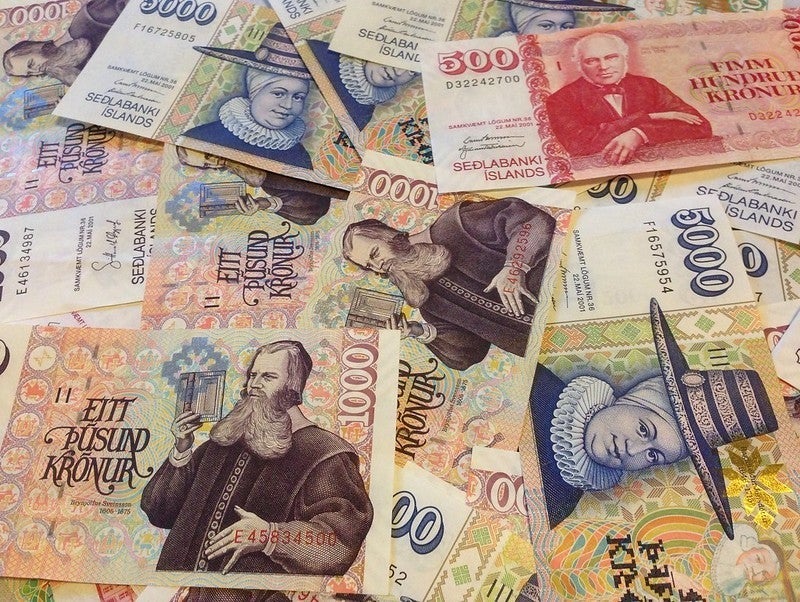
Photo from Flickr, by Tom Jarrett. No edits made.
It might surprise some people that a nation of roughly 390,000 people has its very own currency. The currency of Iceland is called the Krona (ISK). It has a long history of independent monetary policies, including being pegged to the Danish krone and the Euro.
The history of the Krona is complicated, with the locals regularly arguing for or against keeping it. The Krona has little value outside its shores. The Central Bank of Iceland determines its worth, and very few banks outside of Iceland ordinarily carry or exchange it.
While you can exchange money at the airport, banks in Reykjavik typically offer better exchange rates. Before leaving, exchange any leftover Icelandic currency, as most banks abroad won’t accept it.
It’s most common for travelers and locals alike to pay for everything on their credit or debit cards. From small food shacks to large shopping centers, everywhere in Iceland accepts card payments, so it may be worth packing light and paying with your plastic.
FAQ About Prices in Iceland
Below are some of the most common questions about expenses in Iceland.
Is Iceland Expensive?
Yes, Iceland is considered one of the more expensive travel destinations. Costs for accommodation, food, and activities tend to be higher than the European average.
Why Is Iceland So Expensive?
Iceland is expensive due to its remote location, high import costs, and limited resources. Additionally, its strong economy, high wages, and tourism-driven demand contribute to higher prices.
How Much Does a Meal Cost in Iceland?
On average, a meal at a restaurant in Iceland can cost between 15 USD and 40 USD, depending on the type of place and the meal.
How Much Is a Can of Coke in Iceland?
A can of Coke in Iceland typically costs around 2-3 USD, though prices can vary slightly depending on the location.
How Expensive Is a Five-Day Trip to Iceland?
For a budget-friendly trip, you might need around 500-800 USD for five days, depending on accommodation choices, food, and activities. For a more comfortable experience, expect to spend 1,200-1,500 USD or more.
Making the Most of Your Icelandic Adventure on Any Budget
While Iceland is known for its higher travel costs, you can still explore on a budget with the right planning. You can enjoy the beauty without overspending by using Guide to Iceland’s VIP Club, opting for self-drive tours, or choosing affordable accommodations.
Taking part in one of Iceland's many guided multi-day tours can also offer great value. They can help you make the most of your time in Iceland while ensuring you stay within your budget. With the right tips and resources, your dream Icelandic adventure is within reach!
Have you been to Iceland, or are you planning to visit soon? We'd love to hear your thoughts and experiences! Leave a comment below and share your tips or any questions you have about traveling in Iceland.
PLEASE NOTE that all prices listed are subject to change, and we do our best to keep them updated to show the correct information. If you have any additional questions on the costs of traveling in Iceland, don't hesitate to ask them in the comments below!
